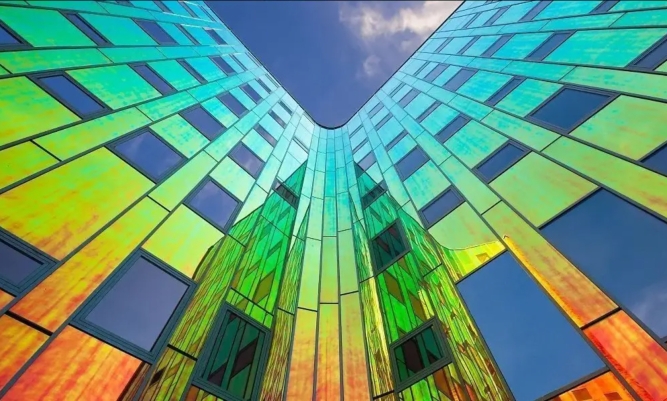
Colored glass, also known as heat absorbing glass or colored glass, is made by adding coloring agents to ordinary glass and can present different colors. The following is a compilation of relevant information about colored glass:
Manufacturing principle: The production of colored glass involves adding metal oxides as coloring agents to ordinary glass, such as Cu2O producing red and CuO producing blue-green. The amount of coloring agent, melting time, and melting temperature all affect the final color depth.
Function and function:
Absorption of solar radiation heat: Colored glass can absorb varying degrees of solar radiation heat, with different colors and thicknesses resulting in different absorption effects.
Absorbing visible light from the sun: It can reduce the intensity of sunlight and have an anti glare effect.
Has a certain degree of transparency: can absorb a certain amount of ultraviolet light, protecting indoor items from UV damage.
Application areas: Colored glass is widely used in indoor decoration, automotive glass, sunglasses lenses, decorative lampshades, etc., bringing brilliant colors to life.
Advantages and disadvantages:
Advantages: It has heat absorption and cooling effects, rich color changes, enhances building aesthetics, and can be used for optical instruments.
Disadvantages: It may cause thermal expansion and cracking due to excessive heat absorption, poor transparency, and prolonged exposure to low light environments, which may affect vision and health.
Types: Colored glass can be divided into transparent colored glass, opaque colored glass, and opaque colored glass, each with its own characteristics. For example, transparent colored glass is colored by metal oxides, opaque colored glass is baked with colored glaze, and opaque colored glass is made by adding opaque agents.
Market and Technology: The colored glass industry occupies a place in the national economy, with mature technological development and multiple technical patents. The global market supply and demand situation and market size are constantly changing, and the Chinese non-ferrous glass industry is also constantly developing.
Investment and prospects: The colored glass industry has attracted the attention of investors, and market size, supply and demand conditions, price trends, and profitability are important considerations for investment decisions. At the same time, the competitive landscape of the industry, upstream and downstream impacts, and investment risks are also key points that need to be evaluated before investing.
Colored glass plays an important role in multiple fields with its unique colors and functions, but it also has some limitations. With the advancement of technology and the development of the market, the application scope and influence of colored glass will further expand.




